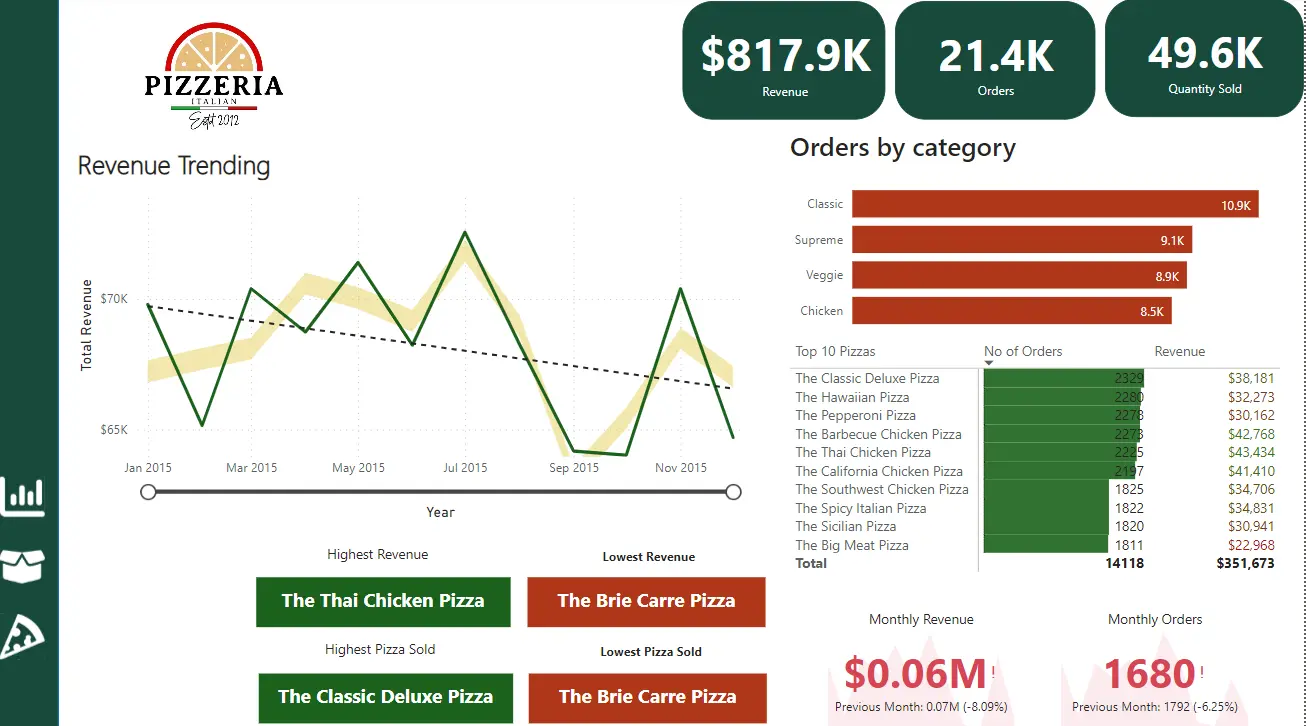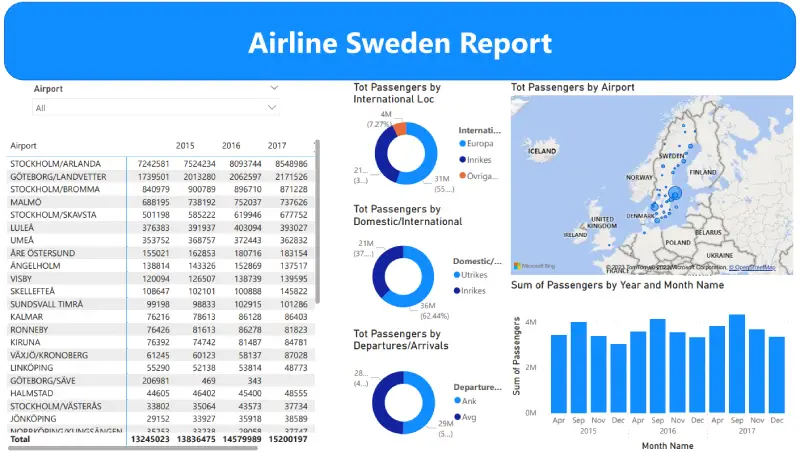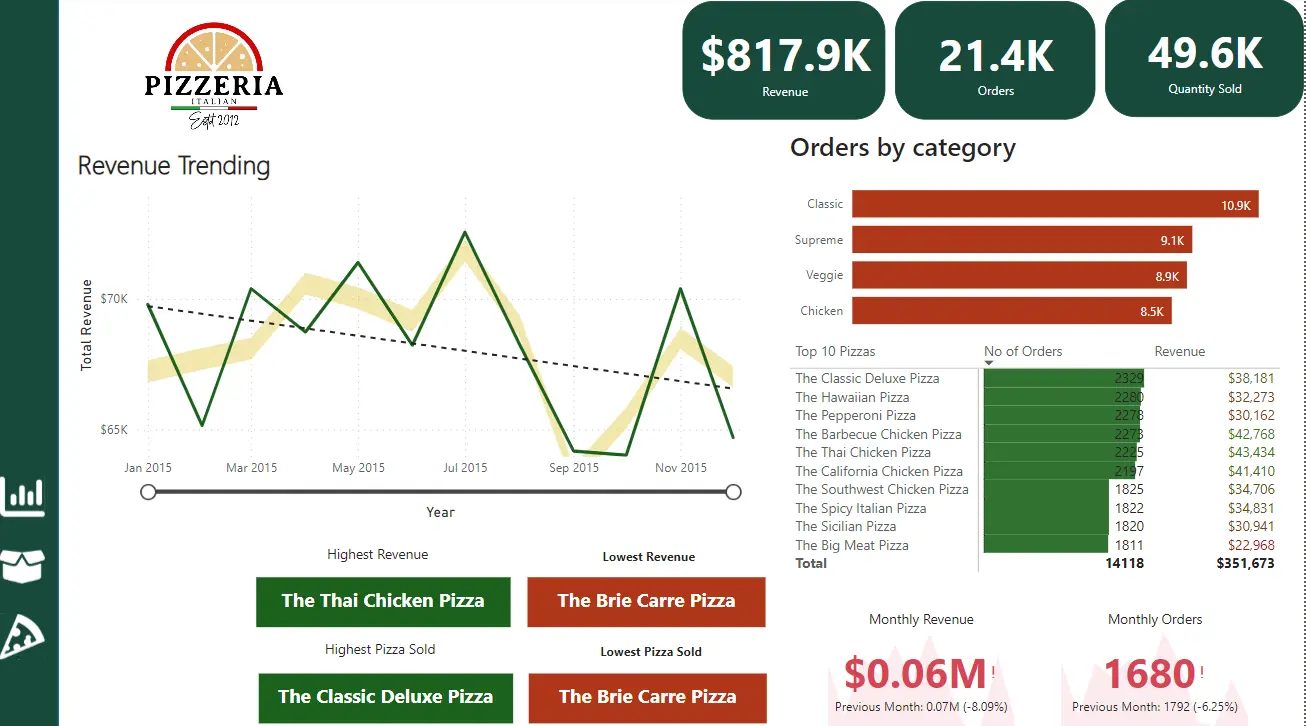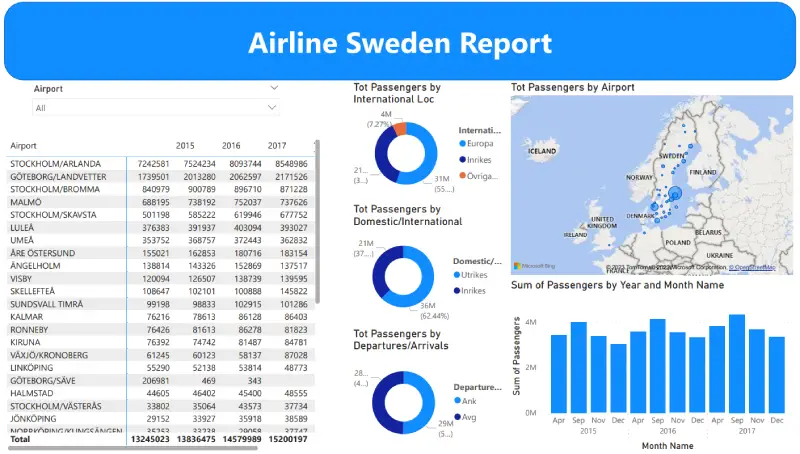Enhancing Operations and Driving Growth: A Data Analytics Journey with Plato’s Pizza
In the fast-paced and competitive world of the restaurant industry, data analytics has become an indispensable tool for improving operations, enhancing customer experiences, and boosting sales. As a data analytics specialist at Digital Rise Solutions, for Plato’s Pizza, a Greek-inspired pizza place in New Jersey. The objective of this project was to leverage transactional data collected over the past year to uncover valuable insights, identify opportunities for driving more sales, and optimize operational efficiency.
Understanding the Dataset:
The dataset used in this project consists of four tables in CSV format:
- Orders table: Contains the date and time of all table orders placed.
- Order Details table: Lists the different pizzas served with each order, along with their quantities.
- Pizzas table: Provides information on the size, price, and pizza type for each distinct pizza in the Order Details table.
- Pizza Types table: Contains comprehensive details about the pizza types, including their name, category, and list of ingredients.
The Maven Pizza Challenge: Plato’s Pizza, recognizing the potential of data analytics . The challenge revolved around answering several critical questions using the dataset: Identifying Busiest Days and Times: By analyzing the Orders table, determine the peak days and times when the restaurant experiences the highest customer footfall. Understanding these patterns could help Plato’s Pizza optimize staffing and resources during busy periods.

Assessing Pizza Production during Peak Hours: The Order Details table held the key to quantifying the number of pizzas produced during peak periods. By doing so, the restaurant could ensure streamlined operations in the kitchen and minimize waiting times for customers. Uncovering Best and Worst Selling Pizzas: The Pizzas and Pizza Types tables held essential data for identifying the best-selling pizzas, which could help focus on popular offerings and potentially promote them further. Additionally, knowing the least popular pizzas would enable the restaurant to consider possible improvements or discontinue items that are not resonating with customers.
Calculating Average Order Value: By analyzing the Orders table and the associated pricing information, I calculated the average order value. This insight allowed Plato’s Pizza to gauge customer spending habits and tailor marketing strategies to boost order value. Optimizing Seating Capacity Utilization: Understanding seating capacity utilization was vital for Plato’s Pizza. I assessed the Orders table data to determine how effectively the restaurant utilized its 15 tables and 60 seats during various time frames, thus offering opportunities for improvement.









